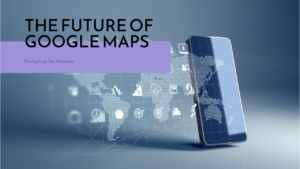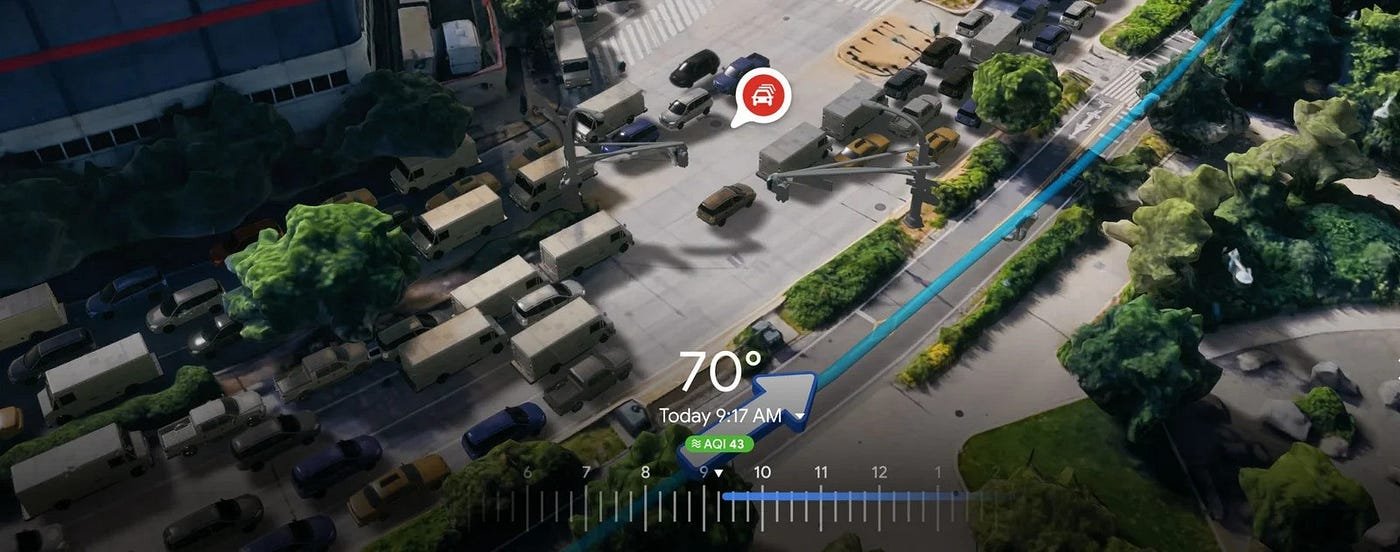Google Maps has long been a leader in digital navigation, constantly evolving to meet the needs of its users. As technology advances, Google Maps continues to innovate, introducing new features and improvements that promise to further enhance our navigation and exploration experiences. Here’s a look at the future of Google Maps, including some exciting innovations and upcoming features.

Advanced Augmented Reality (AR) Navigation
Google Maps has already made strides with its AR navigation feature, but future advancements promise even more immersive experiences. Enhanced AR capabilities will provide users with more detailed and interactive overlays, making it easier to follow directions in complex environments. Expect features like real-time points of interest, dynamic route adjustments, and more intuitive visual guidance as AR technology continues to develop.
Improved Real-Time Traffic and Incident Reporting
The future of Google Maps includes even more sophisticated real-time traffic and incident reporting. With the integration of advanced AI and machine learning, Google Maps will provide more accurate traffic predictions, instant updates on road conditions, and proactive alerts about accidents or road closures. These improvements will help users avoid delays and plan their journeys more effectively.
Integration with Autonomous Vehicles
As autonomous vehicles become more prevalent, Google Maps will play a crucial role in their operation. Future updates are expected to enhance the integration of Google Maps with self-driving technology, providing detailed maps, real-time data, and optimized routes for autonomous vehicles. This integration will ensure that autonomous systems can navigate safely and efficiently, improving the overall driving experience.
Enhanced Indoor Navigation
Google Maps is set to expand its indoor navigation capabilities, offering more detailed maps and navigation options for complex indoor environments like airports, shopping malls, and large public buildings. Future developments will include improved accuracy, more comprehensive indoor maps, and additional features to help users find specific locations within these large spaces.
AI-Powered Personalization
Artificial intelligence (AI) will drive further personalization in Google Maps, offering more tailored recommendations and navigation options based on individual preferences and behaviors. Future features will include smarter suggestions for restaurants, attractions, and activities, as well as personalized route planning that takes into account your unique travel habits and interests.
Advanced Voice Interaction
Voice interaction in Google Maps is expected to become more advanced, allowing for more natural and conversational commands. Users will be able to interact with Google Maps using voice commands in a more intuitive way, asking complex questions, requesting detailed information, and receiving guidance without having to touch their devices.
Enhanced Virtual Reality (VR) Exploration
Virtual Reality (VR) will offer new ways to explore destinations before visiting. Future Google Maps features may include immersive VR experiences that allow users to virtually walk through neighborhoods, explore landmarks, and preview travel destinations. This technology will provide a more engaging and realistic way to plan trips and discover new places.
Expanded Geographic Coverage
Google Maps will continue to expand its geographic coverage, adding more detailed maps and information for previously underrepresented areas. Future updates will include improved mapping for rural regions, developing countries, and remote locations, ensuring that users have access to accurate and comprehensive navigation data wherever they are.
Integration with Smart Home Devices
As smart home technology becomes more prevalent, Google Maps will integrate more seamlessly with smart home devices. Future updates will allow users to interact with Google Maps through voice-activated smart speakers, smart displays, and other connected devices, providing convenient access to navigation and location information from within the home.
Real-Time Environmental Data
Google Maps will increasingly incorporate real-time environmental data to help users make informed decisions. This includes information on air quality, weather conditions, and other environmental factors that can impact travel plans. Users will be able to view and consider these factors when planning routes and exploring new locations.
Conclusion
The future of Google Maps is bright, with a host of innovations and upcoming features set to enhance navigation and exploration. From advanced augmented reality and improved real-time traffic reporting to the integration with autonomous vehicles and expanded geographic coverage, Google Maps continues to push the boundaries of digital navigation.
As technology evolves, Google Maps will remain at the forefront of innovation, providing users with more accurate, personalized, and immersive experiences. Whether you’re navigating your daily commute or exploring new destinations, the upcoming features of Google Maps promise to make your journey more enjoyable and efficient. Stay tuned for these exciting developments and get ready to experience the next generation of navigation.











